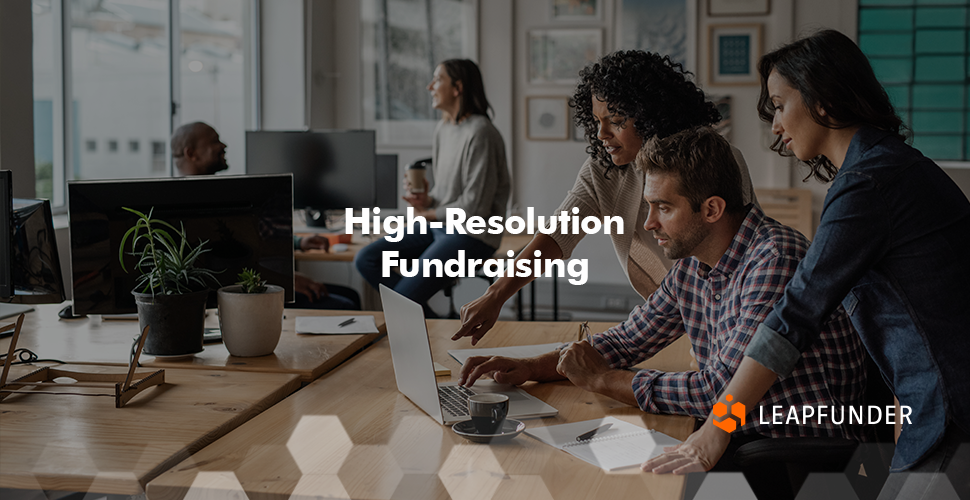If you’re a startup founder looking to raise funding, or an angel investor looking to invest smart capital, you should become familiar with the term high-resolution fundraising. It’s originally from California. The first person to use this term was probably Paul Graham (YCombinator) back in 2010, and Leapfunder has independently been recommending this approach since at least 2013 to its clients.

What is high-resolution fundraising?
It may be easiest to explain the method of high-resolution fundraising by comparing it to traditional VC funding rounds. Traditional VC rounds are characterised by:
- Syndicates of 1 to 3 VCs with a clear lead investor
- All syndicate members get the same terms & conditions
- The round size is fixed in advance and is sufficient for approx. an 18-month runway
In high-resolution fundraising, these laws are dropped. High-resolution fundraising is set up to allow the startup to respond to the smallest changes in the market conditions, so it allows for the terms to be differentiated per investor. It also abandons the notion that any single funding round has a fixed size. And it allows for almost continuous funding, by allowing for more frequent smaller funding rounds.
So you get high-resolution fundraising:
- Syndicates of >3 investors, some more ‘in the lead’ and some more ‘long tail’
- Earlier investors in the round get better conditions, and there might even be bonus options for investors that take up an active supporting role
- The round size can vary depending on the market demand, and the business plan can be adjusted according to what is raised
- There are frequent smaller rounds after milestones are achieved. Investors are asked to reserve extra cash to they can keep investing in future rounds
With high-resolution fundraising, the required cash is always raised ‘as late as possible’. Therefore the startup tends to sell its shares on average a little later in time. And that means the startup gets a slightly better average price for the shares over the successive funding rounds. It saves the founders a lot of shares if done well.
High-resolution fundraising in Europe
At Leapfunder, we’ve always done high-resolution fundraising. We’ve been developing these concepts independently from the ones in California. High-resolution fundraising might be even more important in Europe than elsewhere. Some of the critical advantages are:
- Since early investors have better terms, the startup has something ‘special’ to offer to the first investors, who can, in turn, get a ‘herd effect’ going
- Since the startup will lose fewer shares they can realistically fit all their seed and pre-seed funding squeezed into 20-30% of the company, leaving plenty of founder equity in place when the first VC rounds start
- Since the funding round has a flexible size, the startup can close with the first few investors early on, rather than having to wait until the whole round is complete. That means the cash gets into the business much earlier and the resulting growth can be used to persuade subsequent investors to join
All this is even more important in Europe where investors are generally more hesitant, and valuations are much lower so that excessive early dilution is a bigger risk.
So what is the catch?
The big disadvantage of high-resolution fundraising is that it requires more skills both on the side of the investors and the side of the startup to set it up properly. It’s a better, but more complex mechanism.
This is why Leapfunder has been able to grow. We provide high-resolution fundraising as a service. We handle all the legal paperwork and transaction execution. The only thing the founders need to think about is their business and building relationships with the investors.
Using a service like Leapfunder is a critical enabler for high-resolution fundraising. It’s important to get everything right from the first round. Using the same contracts in every round, with just slightly different financial terms, gives you consistency.
Join our network of startups & investors!


